Essential Water Parameters
- pH: 6.5 - 8.5
- Ammonia: 0 ppm
- Nitrite: 0 ppm
- Nitrate: < 40 ppm
- Dissolved Oxygen: > 5 mg/L
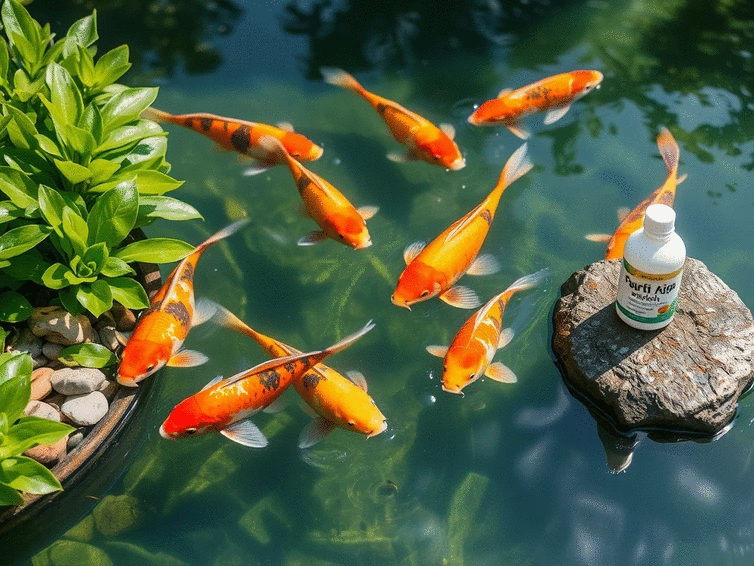
As the vibrant colors of koi glide beneath the water's surface, did you know that maintaining optimal water quality is essential for their health? Understanding the parameters that affect your koi pond can make a significant difference in creating a thriving habitat.
Maintaining optimal water quality is crucial for healthy koi. The visual below outlines the essential parameters to monitor and effective testing approaches.
As a koi pond enthusiast, I can’t stress enough how crucial water quality is for the health and well-being of our beloved koi fish. Monitoring key parameters ensures that your aquatic environment remains a thriving habitat. In this section, we’ll dive into the essential factors that every koi keeper should keep an eye on!
To maintain a vibrant and healthy koi pond, it's important to monitor several key parameters. These include:
Each of these parameters plays a vital role in creating a suitable environment for your koi. Regular checks can help you catch any fluctuations before they become a serious concern!
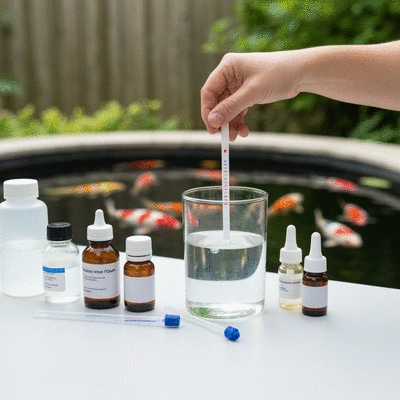
Regular water testing is one of the best practices I recommend to my fellow koi enthusiasts. By consistently monitoring your pond's water quality, you can identify issues before they escalate, ensuring a healthy atmosphere for your fish. This proactive approach saves you from potential disasters, such as fish illnesses or even fatalities!
In essence, regular testing is your first line of defense in maintaining a healthy koi pond. Trust me, it’s worth the effort!
When it comes to testing your pond water, utilizing a reliable water testing kit is essential. There are various types available, including test strips and liquid test kits. Here’s a quick breakdown of each:
To use these kits effectively, follow the manufacturer’s instructions and make it a routine part of your pond maintenance. With regular testing, you’ll have the peace of mind knowing that your koi are thriving in their environment!
We'd love to know your thoughts! How often do you test the water quality in your koi pond? Share your experience with us:
When it comes to maintaining a healthy koi pond, choosing the right treatment is essential. It's important to consider your unique pond conditions and the health of your fish when selecting treatments. Each pond has its own ecosystem, and what works for one may not be effective for another. With over a decade of experience in this hobby, I've learned that careful observation and adjustment are key to creating a thriving aquatic environment.
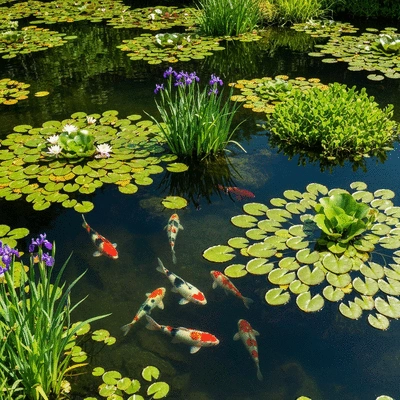
Here are a few factors to keep in mind when making your choice:
By taking these factors into account, you can make informed decisions that lead to better outcomes for your koi!
The ideal pH level for a koi pond should be between 6.5 and 8.5 to ensure optimal health for your koi.
Regular water testing is crucial to identify issues early. The frequency can vary, but consistent monitoring (e.g., weekly or bi-weekly) is recommended.
Essential parameters include pH (6.5-8.5), ammonia (0 ppm), nitrite (0 ppm), nitrate (< 40 ppm), and dissolved oxygen (> 5 mg/L).
Available kits include test strips (quick, easy), liquid test kits (more accurate, multi-parameter), and digital testers (high precision, pricier). The best choice depends on your accuracy needs and budget.
Aquatic plants help maintain water quality by absorbing excess nutrients, providing oxygen, and offering shade and hiding spots for koi, contributing to a balanced ecosystem.
Maintaining the water quality in your koi pond is an ongoing journey that requires consistent monitoring and a willingness to adapt your strategies. Regular testing of your water parameters and timely interventions can make a significant difference in the health of your fish and the clarity of your pond. Remember, a healthy pond is a happy pond! The Purdue Extension provides further guidance on pond management, reinforcing the importance of water quality for aquatic life.
To reinforce the importance of water quality, here are a few actionable insights:
By following these guidelines, you'll help ensure a vibrant, crystal-clear pond that enhances your outdoor space!
If you’re passionate about creating the best environment for your koi, I invite you to subscribe to our community. Here at Best Koi Ponds, we share valuable insights that can help you navigate the world of koi care, from beginner tips to advanced techniques. Plus, we love hearing from fellow koi enthusiasts—share your experiences and tips too!
To assist you further, we've curated a list of trusted water quality testing kits and treatment products on our website. These products have proven effective in maintaining optimal pond conditions and are aligned with the advice shared in this article. Check them out to give your koi the best care possible!
Don’t overlook the importance of aquatic plants in your pond! They play a crucial role in maintaining water quality by absorbing excess nutrients and providing oxygen. Plus, they offer shade and hiding spots for your koi, helping to create a balanced and beautiful ecosystem. By incorporating a variety of plants, you enhance both the aesthetic and health of your koi pond.
Here is a quick recap of the important points discussed in the article:
Koi Care: Filtration and Aeration
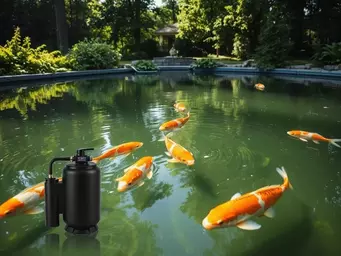
Did you know that the health of your koi fish is directly linked to the quality of their pond’s fi
Koi Pond Care: Natural vs. Chemical
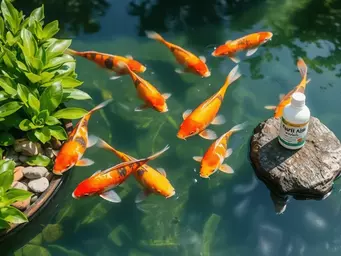
As the vibrant colors of koi glide beneath the water's surface, did you know that maintaining optima
Koi Care: Filtration and Aeration
Koi Pond Care: Natural vs. Chemical
Creating a Healthy Koi Pond
Maintaining Koi Pond Water Quality
Koi Pond Shape and Size Guide